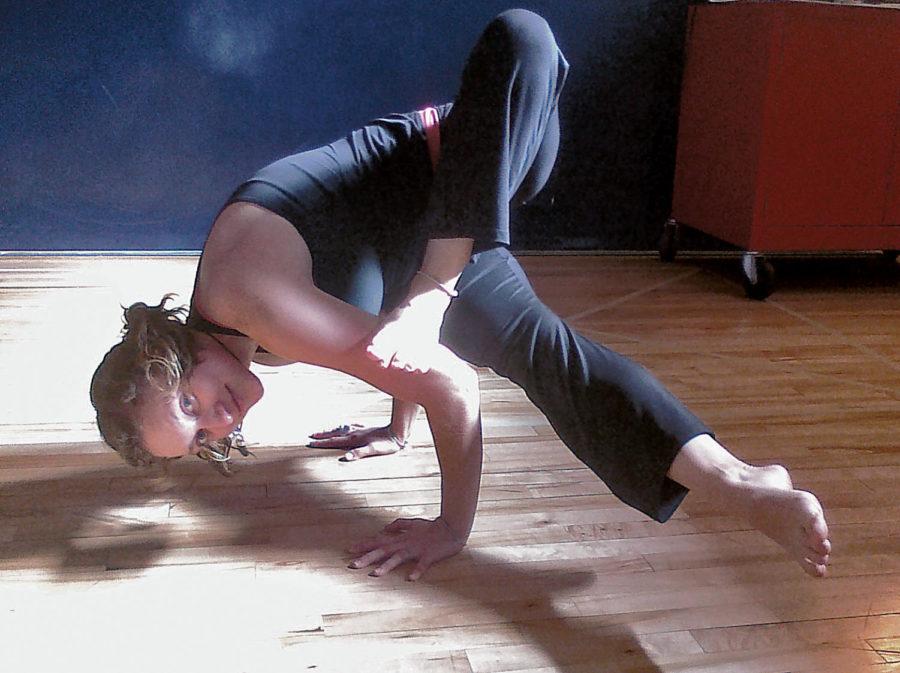Bruning: The personal practice of yoga
Photo: Lea Petersen/Iowa State Daily
Claire Kruesel, a graduate student in biochemistry and yoga instructor, strikes a yoga pose on Wednesday, Oct. 20, 2011, in Beyer Hall. Yoga classes are taught every day of the week at various times in the third floor studio.
January 20, 2012
For the last couple of weeks, the yoga world has been buzzing about an article published in the New York Times titled, “How Yoga Can Wreck Your Body.”
As a practitioner of yoga myself, I immediately questioned how this article could possibly exist. How could something that makes my body feel so amazing be bad for me?
Well the simple answer is malpractice. The article does not condemn the practice of yoga; it simply brings to light some issues with the modern yoga class. It does leave out, however, some very important aspects of the practice.
In recent decades, yoga has exploded in the United States. In cities like New York, you can find a studio every few blocks downtown. This expansion obviously demands more teachers, and more teachers does not always mean trained teachers.
The article cites instances of instructors telling students to do postures too advanced for their level or in an incorrect manner and causing severe injuries. I do think that the untrained teachers would be somewhat to blame, but you have to question the common sense of the student too. My experience with most yoga classes is an emphasis by the teacher to do what feels good.
Yoga is meant to be a personal practice. Once you step outside of yourself and begin practicing for others, be it the instructor or other students, you lose the intent and open yourself up to injury. If it hurts, don’t do it. But, take the time to get to know your body well enough to know the difference between pushing yourself and hurting yourself.
The origin of yoga came from a culture where sitting cross-legged was an everyday practice. Certain poses come as a difference to a culture where sitting at a desk all day is the norm. When practiced correctly we can use the practice to counteract our habits, but we must keep in mind the state and nature of our body.
There are certainly risks with yoga, as with any physical exercise and the article leaves out very important aspects and benefits of yoga. The practice of yoga isn’t just physical. We are mostly familiar with hatha yoga, which consists of a series of poses, breathing exercises, and meditation. But there is also karma yoga (the yoga of action), bhakti yoga (the yoga of devotion) and jnana yoga (the yoga of knowledge) as defined by the Hindu religious work, the Bhagavad-Gita. You may not be physically able to practice hatha, but everyone can practice the other forms.
Much of the problem we see with practicing yoga is that we are practicing a selfless art in a competitive and egotistical culture. We measure our success by the success of those around us, and it is often no different on the yoga mat.
I sometimes have problems with this, especially if I am practicing with people I know. However, taking the time to train ourselves to overcome that habit can prove beneficial not only on the yoga mat but in our everyday lives. Being able to appreciate what your body and mind are capable of on their own instead of in comparison is a valuable skill that can come with much happiness.
Whether you are an experienced yogi or a beginner, I would encourage you to look up the article by William J. Broad and the corresponding columns on the “Room for Debate” page in the opinion section of the New York Times. There are many points that should be taken into consideration with the practice of yoga, but there are also many things that open us up to many possibilities both physically and mentally.







